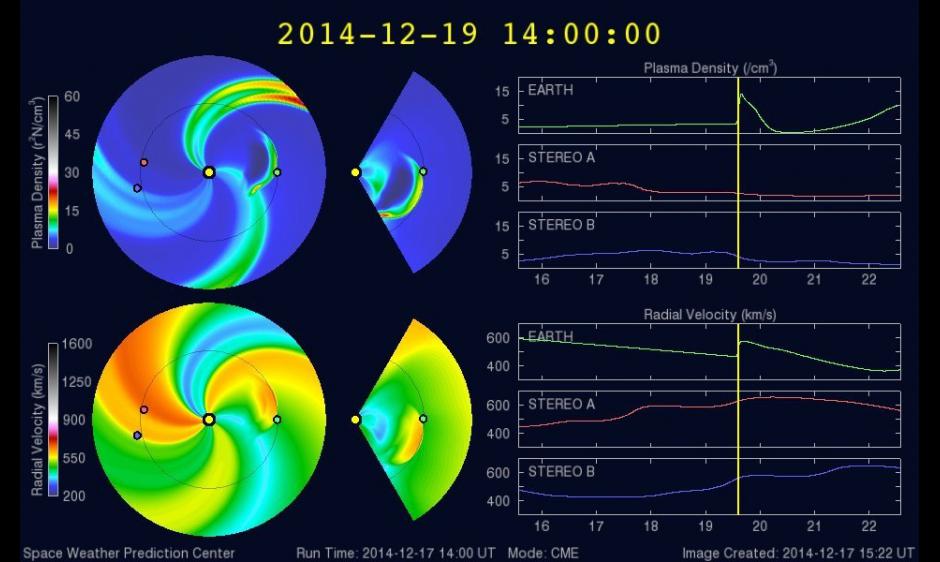
Following a more thorough interrogation of the available imagery, forecasters have determined that the potential exists for at least a portion of the ejecta, associated with the coronal mass ejection (CME) from yesterday's R2 Moderate radio blackout flare event, to impact Earth. While a majority of the CME is directed south of the Sun/Earth plane, WSA Enlil models (accompanying image) indicate the small portion that is Earth directed should arrive mid to late day on 19 December. Geomagnetic activity is expected to become enhanced, but remain below the G1-Minor storm levels. There is a chance conditions could briefly exceed the G1 threshold, but predominant conditions should remain below the G1 level. Regions 2241 and 2242 remain the areas of greatest interest, with both having complex magnetic structure. Forecasters are keeping a watchful eye on both regions as they move into a more geoeffective position on the visible disk. Stay tuned here for updates.